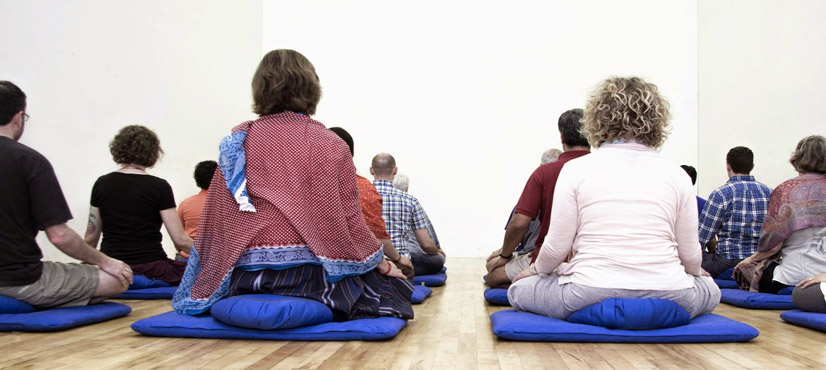
This wonderful set of "meditation boosters" was developed by Laura Trebs for a Joy of Living group in the Twin Cities. It is a great resource for on-going meditation practice.
The How, When, and Where of Practice
“Different circumstances require different measures, so it’s always helpful to have a number of options at your disposal . . . most appropriate technique depends as much on the particular situation as much as on your personal temperament and capabilities.”
- Yongey Mingyur Rinpoche - Joy of Living p. 194
TRIAL AND ERROR
“The technique itself doesn’t matter. The important thing is to learn how to rest your mind to work with it instead of being worked by it.”
- Yongey Mingyur Rinpoche - Joy of Living p. 194
“Whatever method you choose, it’s very important during each session to alternate between focusing on an object and simply resting your mind in objectless meditation.”
- Yongey Mingyur Rinpoche - Joy of Living p.195
“Short periods, many times.”
- Yongey Mingyur Rinpoche - Joy of Living p. 196
“The best rule is to spend less time meditating than you think you can . . . leaves yourself wanting more.”
- Yongey Mingyur Rinpoche - Joy of Living p. 196
INFORMAL PRACTICE
“Any daily activity can be used as an opportunity for meditation.”
- Yongey Mingyur Rinpoche - Joy of Living p. 201
“When you integrate [informal] practice into your daily life, you avoid the trap of being calm and peaceful during formal meditation and then turning around and being tense and angry at the office.”
- Yongey Mingyur Rinpoche - Joy of Living p. 202
“Use what might ordinarily seem to be distractions as support for resting your mind.”
- Yongey Mingyur Rinpoche - Joy of Living p. 203
Progressive Stages of Meditation Practice
“The expectations you bring to meditation practice are often the greatest obstacles you will encounter.”
- Yongey Mingyur Rinpoche - Joy of Living p. 214
WATERFALL EXPERIENCE: “. . . a waterfall suddenly swollen by a spring thaw . . . hundreds of rocks, stones, and other elements flowing through the water . . . it’s very easy to become distracted by all that mental and emotional debris.”
- Yongey Mingyur Rinpoche - Joy of Living p. 212
RIVER EXPERIENCE: “Gradually as you continue to practice, you’ll inevitably find yourself able to clearly distinguish the movements of thoughts, emotions, and sensations through your mind . . . things are still moving, but more slowly and gently.”
- Yongey Mingyur Rinpoche - Joy of Living p. 215
LAKE EXPERIENCE: “. . . your mind begins to feel very smooth, wide, and open, like a lake without the waves. You find yourself genuinely happy, without any ups and downs. You’re full of confidence, stable, and you experience a more or less continuous state of meditative awareness, even while sleeping.
- Yongey Mingyur Rinpoche - Joy of Living p. 216
The Aim of Attention
STEP 1: THE MAIN EXERCISE
Ordinary Awareness (noticing and identifying)
- Yongey Mingyur Rinpoche - Joyful Wisdom p. 227
Meditative Awareness (watching thoughts and feelings as a means to stabilize awareness)
- Yongey Mingyur Rinpoche - Joyful Wisdom p. 228
Objectless Shamatha (aware of being aware – stability of awareness)
- Yongey Mingyur Rinpoche - Joyful Wisdom p. 230
STEP 2: TRY SOMETHING DIFFERENT
“Once you begin to grow your ‘attentional muscles’ you can begin drawing attention to larger emotional issues.”
- Yongey Mingyur Rinpoche - Joyful Wisdom p. 234
STEP 3: STEP BACK
“If an emotion or a disturbing state of mind is too painful to look at directly, seek the underlying condition that holds it in place. You may be surprised what you discover.”
- Yongey Mingyur Rinpoche - Joyful Wisdom p. 235
STEP 4: TAKE A BREAK
“Stopping gives you more space, which allows you to accept the ups and downs, the possible turbulence of the experience that may be generated by your practice.”
- Yongey Mingyur Rinpoche - Joyful Wisdom p. 236
“In general, when you engage in attention practice, you’ll encounter two extreme points at which you know when to stop. One extreme is when your practice begins to deteriorate . . . The second extreme at which it’s important to take a break occurs when your experience of the practice feels absolutely fantastic.”
- Yongey Mingyur Rinpoche - Joyful Wisdom p. 237,238






Thank you, Laura and Kathy, for sharing this!
Thanks these are helpful and great reminders!
Very useful; thank you! I have read both of YMR’s books, but in isolation these quotes seem to hit home more.
Thank you, wish all be happy
These are extremely helpful points! I need to go back to this page often — and keep refreshing myself with these vital tips!
Thank you so much! This page helps me stay in focus.
Very very helpful, thank you!
Thanks a lot …
They are good reminders
Thank you very much for making this immensely valuable material available to us!